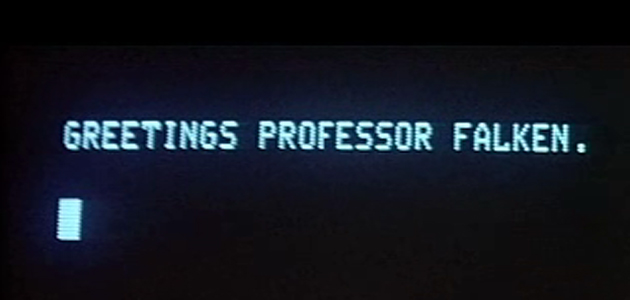Abstract
This is not a history project. Nor is it about video games and the people who play them. Instead, this project focuses on the cultural discourse surrounding digital games as they have been refracted by the lenses of American film and television. This study considers a broad cross-section of Hollywood’s depictions of games, tracing their evolution from objects of fascination and technological possibility in the 1970s and 1980s to catalysts for antisocial behavior in the 1990s and 2000s. This evolution maps revealingly onto the changing economic circumstances of the games industry, describing a direct correlation between the economic viability of the industry and its critical depiction in Hollywood.
The chronological trajectory mapped by this project moves through recognizable stages with the goal of placing equal emphasis on specific media examples as well as broad patterns. This illuminates important but easily overlooked distinctions among various genres and platforms of games and how they are imagined on film and television. Arcade games, for example, were subjected to much less withering critiques than their home console counterparts; PC-based games were likewise more commonly granted nuanced treatment in the eyes of Hollywood. How can we explain these differences? A closer look at the evidence offered by film and television at various points in time, viewed in light of the material circumstances of the industries involved, may provide some answers.
The basic contours of this project’s argument are simple. From its origins in the 1970s and continuing through the end of the 1980s, Hollywood’s vision of games was remarkably accepting; narratives were largely balanced in terms of gender, and the youth culture emerging around games was portrayed with relative dignity. During this time, the games industry was still establishing its foothold in the homes of North America and making its way into the leisure time of families. In spite of stunning profits in the earliest days of the 1980s, the industry suffered a massive collapse in 1983, followed by a rebound of home consoles in the 1990s that placed it in more direct competition with the film and television industries. By the 2000s, console games were thoroughly integrated into American homes, posing for the first time a viable threat to the hegemony of the film and television industries for domestic entertainment. Throughout this period of ascendance, cinematic tropes of gaming grew more critical, with gamers increasingly associated with a range of antisocial behaviors, especially violence, addiction and repressed sexuality. Ultimately, the project argues that depictions of games on film and television include both a dominant discourse of denunciation and notable exceptions that allow for more complex, alternate readings.
This project was created using the electronic authoring platform Scalar, which allows for the inclusion of a large number of clips – probably too many to expect any individual reader to watch them all. Whenever possible, the argument put forward in each of Scalar’s “paths” has been conceived with minimal dependence on adjacent elements. Readers may also explore this project’s complete collection of clips via the Media Chronology page. The goal of this structure is to enable readers to explore the project according to their own areas of interest rather than by necessarily following a sequence of linear arguments. In addition, the collection of clips included in this article constitutes a sub-archive within the critical media sharing site Critical Commons, where all original media files may be viewed or downloaded for further use. Reader-viewers are thus invited to investigate the media and arguments put forward here not as definitive or exclusive readings, but as interpretive beginnings, which will hopefully be generative of further discussion and research.
Click here to see the full article.
– All images belong to their rightful owner. Academic intentions only. –
Author contacts
Steve Anderson – sfanders@usc.edu

This work is licensed under a Creative Commons Attribution-NonCommercial 4.0 International License.

